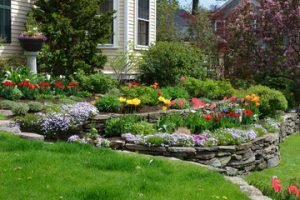Water travels through unseen paths beneath walls and floors. These hidden routes are the veins of every living space. Plumbing quietly sustains daily comfort without demanding attention. Its role becomes visible only when something goes wrong.

The history of plumbing mirrors human progress itself. Early civilizations built rudimentary systems to transport water and remove waste. Over centuries, materials evolved from clay and lead to more efficient alternatives. These advancements transformed sanitation, health, and urban development. Contact Epiphany Plumbing Solutions for professional help.
Modern plumbing is no longer just about pipes and drains. It’s an integrated system engineered for safety, efficiency, and sustainability. Each component serves a purpose, from delivering clean water to managing pressure and flow. Together, they form the infrastructure that supports modern life.
Water quality is one of the most crucial aspects of plumbing design. Systems are built to prevent contamination and ensure safe delivery. Pressure regulation, backflow prevention, and proper material selection all play vital roles. The result is water that is clean, consistent, and dependable.
The science behind plumbing is a delicate balance of physics and engineering. Gravity, pressure, and flow dynamics must all be precisely calculated. Incorrect slopes or poorly planned junctions can cause blockages and inefficiency. Every detail in a plumbing plan impacts how water behaves.
The hidden nature of plumbing often masks its complexity. Behind walls are intricate networks of supply lines, vents, traps, and valves. Each part must function in harmony to maintain performance. Even small errors can disrupt the system’s entire operation.
The art of installation requires precision and foresight. Plumbers must anticipate future maintenance, expansion, or environmental conditions. A system built for decades must remain accessible, adaptable, and durable. Proper planning reduces future costs and complications.
Materials play a significant role in the evolution of plumbing systems. Modern options balance strength, resistance, and environmental impact. Choices affect not only longevity but also water quality and safety. The right materials ensure resilience under pressure and temperature changes.
Sustainability has become a defining force in plumbing innovation. Water conservation is no longer an afterthought but a design priority. Systems now integrate features that reduce waste and improve efficiency. These solutions benefit both the environment and long-term utility costs.
Smart technology is also transforming the plumbing landscape. Sensors detect leaks before they become disasters. Automated valves regulate flow and pressure with precision. Connected systems provide real-time data, enabling proactive maintenance.
Preventive care is essential for extending a plumbing system’s lifespan. Regular inspections reveal issues before they escalate into expensive repairs. Small leaks, if ignored, can cause structural damage and health risks. Consistent upkeep safeguards both property and occupants.
Drainage remains one of the most challenging aspects of plumbing. It requires careful grading and venting to prevent blockages and gas buildup. Poorly designed drains can lead to backups, odors, and contamination. Mastery of fluid dynamics is key to effective waste removal.
Water pressure management is another critical factor. Too much pressure strains pipes and fixtures, while too little hinders performance. Regulators and expansion tanks help maintain stability and longevity. Balanced pressure ensures reliable operation across the entire system.
The relationship between plumbing and public health is profound. Proper systems prevent the spread of waterborne diseases and contaminants. They ensure that waste is safely transported away from living spaces. This silent safeguard underpins every aspect of modern sanitation.
Design aesthetics increasingly influence plumbing choices in contemporary spaces. Exposed fixtures and minimalist designs blend functionality with style. Bathrooms and kitchens now showcase plumbing as part of interior design. These changes highlight its evolving role beyond utility.
Renovations present unique challenges in plumbing work. Older systems may require extensive updates to meet current standards. Retrofitting must account for existing structures, materials, and limitations. Skilled craftsmanship bridges the gap between old infrastructure and new requirements.
Regulations and codes are the backbone of safe plumbing practice. They set minimum standards for installation, materials, and performance. Compliance ensures safety, efficiency, and environmental responsibility. Professionals must stay updated with evolving codes to maintain quality.
The industry also faces challenges from aging infrastructure. Many older buildings rely on outdated materials and designs. Upgrading these systems requires careful planning and significant investment. Yet modernization is essential for safety, efficiency, and sustainability.
Emergency plumbing services demonstrate how critical the trade is. Burst pipes, sewer backups, and water heater failures can halt daily life. Rapid response and skilled intervention prevent property damage and restore normalcy. The ability to diagnose and solve crises is a hallmark of expertise.
Education and training remain vital for advancing the plumbing profession. It combines technical skill with problem-solving and safety awareness. Apprenticeships and certifications ensure high standards across the field. Continuous learning keeps practitioners aligned with new technologies and practices.
Climate change introduces new considerations for plumbing design. Extreme weather affects water supply, drainage, and system resilience. Future systems must adapt to changing rainfall patterns, droughts, and temperature fluctuations. Sustainability and adaptability are becoming non-negotiable principles.
Water heating technology illustrates how plumbing intersects with comfort and energy use. Innovations improve efficiency, reduce consumption, and enhance reliability. Options now range from tankless designs to integrated heating systems. These advancements reflect the industry’s shift toward smarter solutions.
Leak detection has evolved from guesswork to science. Modern tools use acoustic sensors, thermal imaging, and pressure monitoring. Early detection prevents damage, conserves water, and lowers repair costs. Proactive approaches replace reactive responses.
Backflow prevention is another essential aspect of plumbing safety. Devices ensure that contaminated water does not reverse flow into clean supply lines. This is especially crucial in systems connected to irrigation or industrial processes. Proper installation protects both individual properties and public water networks.
The economics of plumbing extend beyond installation costs. Efficient systems reduce water bills, maintenance expenses, and environmental impact. Quality work pays dividends over decades of service. Cutting corners may save money initially but often leads to higher long-term costs.
Plumbing also plays a role in disaster resilience. Systems designed to withstand flooding, freezing, or seismic activity minimize disruption. Innovations like flexible piping and emergency shutoff valves improve safety. Preparedness is a growing focus in modern infrastructure planning.
The human element remains at the heart of plumbing’s evolution. Behind every system is a team of professionals dedicated to safety and function. Their work often goes unnoticed but is essential to public well-being. The trade is both a science and a craft requiring skill and care.
Water recycling systems are emerging as a solution to resource scarcity. Greywater reuse and rainwater harvesting reduce dependence on municipal supply. Integrating these systems requires thoughtful plumbing design and advanced technology. They represent the future of sustainable water management.
The future of plumbing is shaped by innovation and necessity. As populations grow and resources tighten, efficiency becomes paramount. Systems will become more intelligent, adaptable, and environmentally conscious. The trade will continue to evolve alongside society’s needs.
Ultimately, plumbing is more than pipes beneath the floor or behind the wall. It is an invisible network that sustains comfort, health, and quality of life. Its presence is felt in every drop of clean water and every flush that disappears without thought. This silent infrastructure is one of humanity’s greatest achievements, and its importance will only grow with time.


